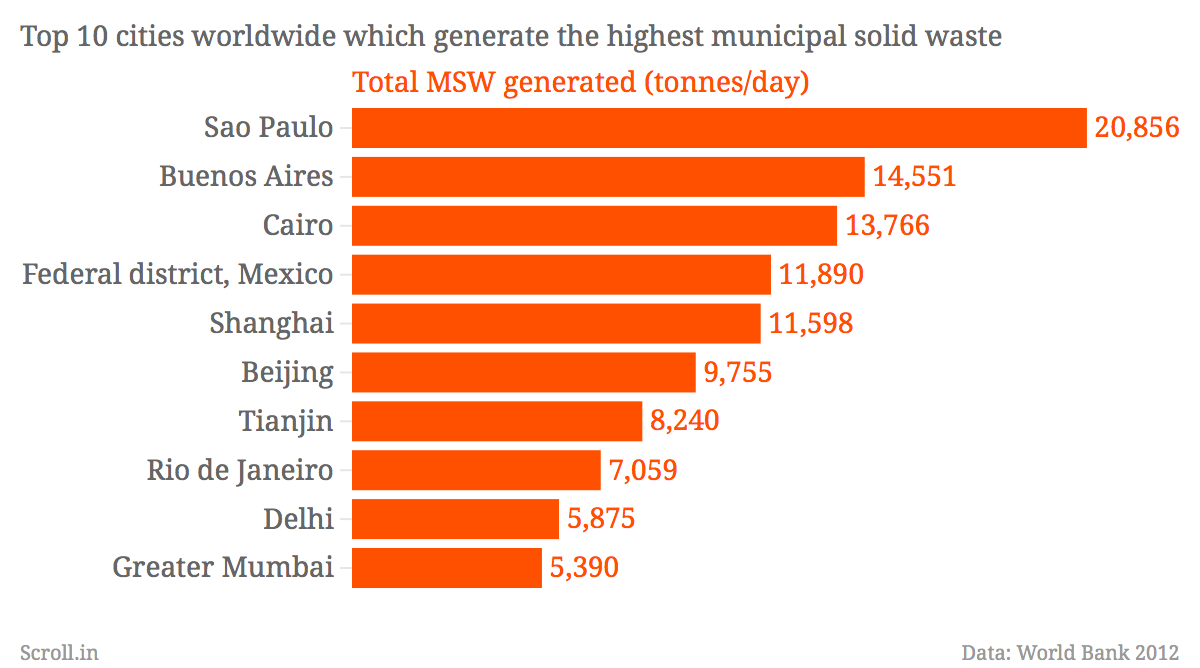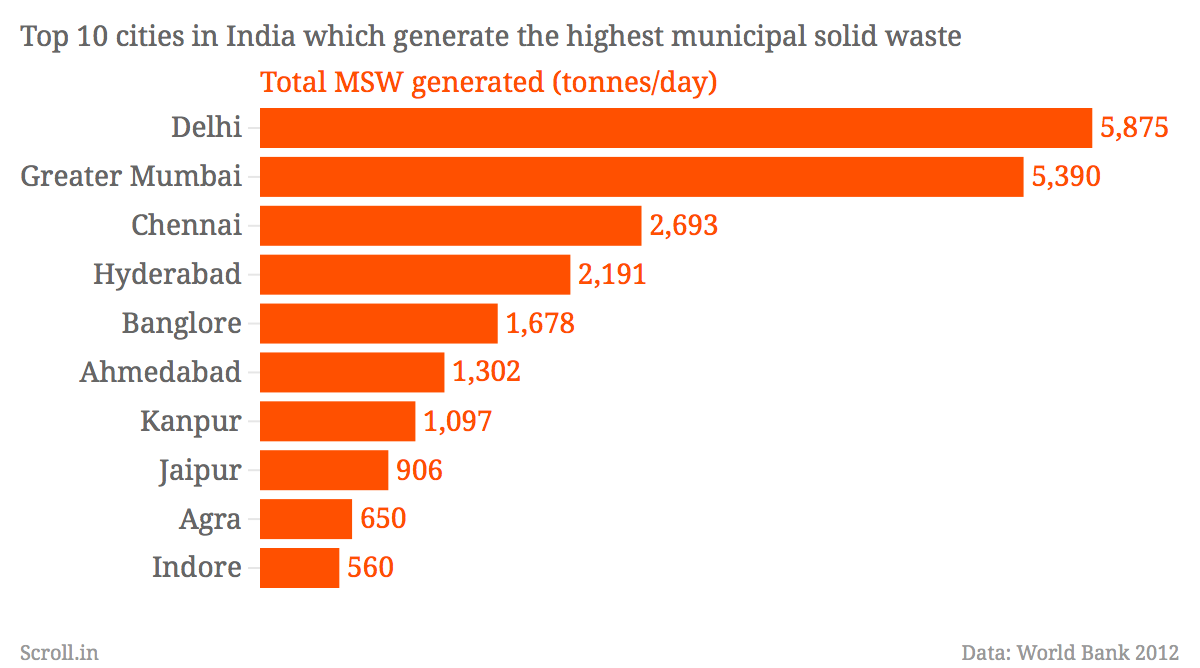Despite a National Green Tribunal order last week to various central agencies and state police authorities of Delhi and Uttar Pradesh to control the dumping of construction debris, dumping this waste into forest areas, rivers and drains leading to rivers, continues.
“Not only is this destroying the water supply, but contractors who dump C&D waste on river beds and elsewhere cause soil erosion, which leads to environmental degradation,” said Anumita Roychowdhury, executive director of the Centre of Science and Environment. “In addition, this C&D waste doesn’t dissolve in the water and results in raising the water level of rivers, which can lead to floods.”
One of the reasons several attempts to clean rivers like the Ganga and Yamuna have not been successful is because the dumping of construction waste has drastically increased over the years, according to an official at the Central Pollution Control Board.

According to a study by the World Bank in 2012, Delhi generates 5,875 tonnes of municipal solid waste per day and and Mumbai 5,390 tonnes. The two metros are among the world's top 10 cities in terms of construction debris.
The data also revealed that other metros like Chennai, Hyderabad and Bangalore also generate high amounts of construction waste.

Construction boom
Across the world, the construction industry is growing at 5.5% per annum, but in India the sector is booming at 10% per annum. The construction industry constitutes 10% of India’s total gross domestic product.
The Centre of Science and Environment study estimates that 70% of the building stock in India is yet to come up. This means that built-up area, which stood at 21 billion square feet in 2005, will expand to 104 billion square feet by 2030. Since 2005, new construction has added 5.75 billion square metres of floor space, with close to a billion square metres in 2013 itself, according to the Technology Information, Forecasting and Assessment Council.
“Just the C&D waste generated from new construction is over 250 million tonnes,” said Roychowdhury. “We have not even considered the debris left over from renovations of existing structures, repair or roads and dams. It’ll be over 550 million tonnes, which makes the C&D waste higher than all other forms of solid waste put together.”
The solution
The best way to combat this environmental damage is by an old technique: recycling. Construction waste must be recycled and used in new constructions. This will significantly reduce the construction waste, while allowing the construction sector to grow as it needs to.
A number of few environment-friendly and cost-efficient recycled building materials, components and construction techniques have already been developed. “These products have been tested and found suitable for use, but products manufactured by recycling plants are finding no takers because recyclable construction materials are not permissible for use according to the Bureau of Indian Standards,” Roychowdhury said.
Policy muddle
As per the Bureau of Indian Standards, concrete can be made only with naturally accessed aggregates. Concrete-producing agencies cite this law to avoid recycling construction debris. The Ministry of Urban Development’s Municipal Solid Waste Management Rules, 2000, fail to give requisite attention to construction and demolition waste.
The Ministry of Environment and Forest constituted a working sub-group on construction waste to prepare a road map for the management of solid waste. In 2010, the committee said that it was essential to formulate data on the amount of construction debris generated in the country, segregate construction waste at the source, develop institutional mechanisms for waste collection, impose charges on construction waste generators, and formulate standards for waste.
It also said that the Municipal Solid Waste Management Rules of 2000 should be amended and recyclable construction materials be included and certified for use.
However, the new draft of the Municipal Solid Waste Management Rules, 2013, has no mention of construction debris management or the recommendations of the committee.
An official of Bureau of Indian Standards claimed that the bureau permits the use of recyclable construction materials under IS: 456-2000. He did admit, however, that the product had to go through a number of testing units at the bureau for approval of use, which is probably why concrete manufacturing agencies chose to avoid getting into recycled products.
Potential solution
The first steps have been taken to remedy the situation have already been taken in both Delhi and Mumbai.
In 2009, Infrastructure Leasing and Financial Services built a concrete recycling plant at Burari, in partnership with the Municipal Corporation of Delhi. It collects 500 tonnes of construction waste per day from three designated zones of Delhi. The construction waste is recycled into Ready Mix Concrete. The products have been tested in various laboratories, including the Bureau of Indian Standards, according to the Centre of Science and Environment report.
A somewhat similar project in Navi Mumbai, operational between 2002 and 2006, was forced to shut as it failed to get both policy and market support.










